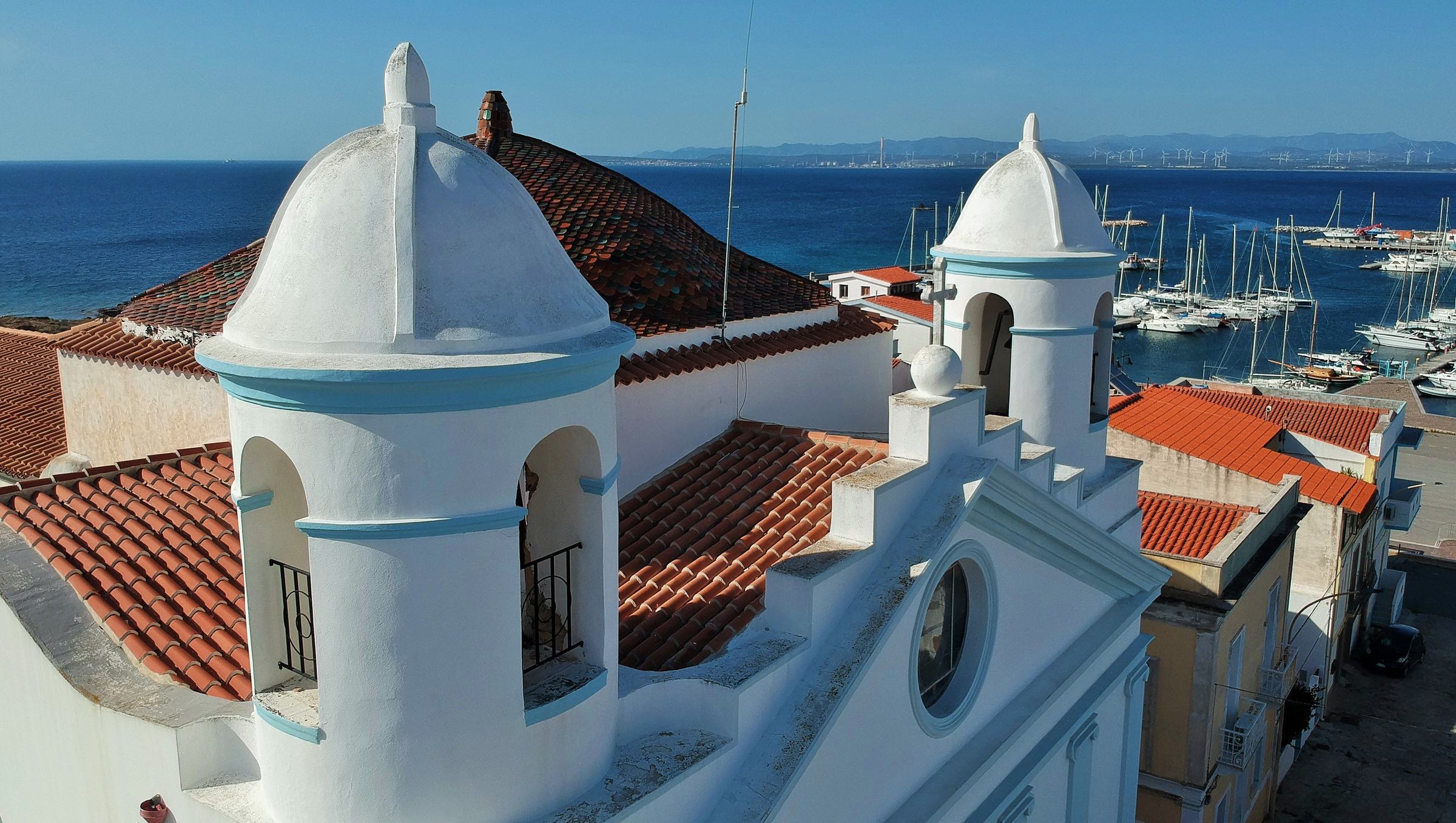Descrizione
La storia di Calasetta inizia nel 1769, quando 38 famiglie di pescatori di corallo (poi di tonno), originari di Pegli ma provenienti dall’isola tunisina di Tabarka, già fondatori di Carloforte, chiesero al re Carlo Emanuele di popolare anche la costa settentrionale dell’isola di Sant’Antioco. I 130 coloni tabarchini si stabilirono a Cala de Seda, di fronte all’isola di San Pietro, lungo le rotte costiere di passaggio del tonno, la cui pesca ha reso celebri Carloforte e Calasetta e contribuisce alle loro prelibatezze culinarie. Poi arrivarono coloni piemontesi, che portarono preziose tecniche di coltivazione della vite, da cui la produzione del famoso Carignano del Sulcis. Infine, altri coloni giunsero dalla Sicilia. Oggi tremila abitanti popolano il secondo centro urbano – dopo Sant’Antioco – della più grande isola del Sulcis. Le originarie caratteristiche tabarchine e liguri sono immutate, compresa la lingua. Il paese, estremamente regolare e ordinato, è arroccato su una collina che scende verso il porto. Al centro svetta una torre costruita dai Savoia prima della fondazione per difendere il canale tra le due isole. Calasetta è caratterizzata dal bianco delle case, dall’azzurro del cielo e del mare e dal verde dei ginepri. La costa è bassa e sabbiosa a nord-est con tre meravigliose spiagge: Spiaggia Grande, Sottotorre e Le Saline, la cui soffice sabbia si gonfia in dune circondate da uno stagno, oasi avifaunistica. Mentre a ovest dominano le scogliere a picco sul mare: brilla la suggestiva Mangiabarche, sorvegliata da un faro sullo scoglio di fronte, e la splendida Cala Lunga, un fiordo verde smeraldo che dal mare aperto conduce a una spiaggia riparata. Alcuni tratti si raggiungono solo in barca, a piedi o in mountain bike, come Cala Tuffi, una piscina circondata da pareti rocciose. E poi ci sono Portixeddu, fatta di ciottoli, e il Nido dei Passeri, una coppia di faraglioni che emergono dall’acqua come rifugio per gli uccelli. Testimonianza della preistoria di Calasetta è la domu de Janas di Tupei, dove sono stati rinvenuti frammenti di terracotta, bronzo e argilla. Non mancano resti di nuraghi posti su bricchi (rilievi). Nelle campagne sono state scoperte incisioni rupestri di età fenicia, resti di un sarcofago (forse) punico e, di età romana, reperti in ossidiana e ruderi di un antico edificio. Nel Medioevo il territorio fu frequentato dagli abitanti della vicina Sulki (oggi Sant’Antioco), colonia fenicia conquistata dai Cartaginesi, che raggiunse il suo massimo splendore in epoca romana. Imperdibile una visita al museo d’arte contemporanea (MACC), che ospita una collezione di opere pittoriche che riassume le tendenze europee tra il 1960 e il 1970.



Recensioni
Ancora non ci sono recensioni.